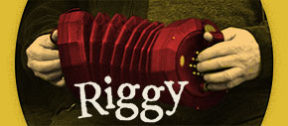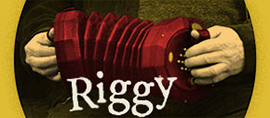Peter:

I grew up in New York City, and according to 23andMe, I’m 94% Ashkenazic. But to be more specific, I’m “Jewish Communist Atheist.” And that is actually relevant to my musical background. My father was a volunteer in the Abraham Lincoln Brigade in the Spanish civil war, and then in the US Army during world war II. He had different jobs, mostly he was a jeweler and loved engraving things and painting; he was also a union organizer. My mother was a nurse. We lived in the Bronx until I was five. Then we moved into a new garden apartment complex in Queens Village that was for veterans (we called it “the project” but without the negative connotation of housing projects that I didn’t discover until I was older). As a result in each of the 800 apartments there was a kid my age and another a year older or younger. That place was ground zero for the baby boom. It was also about 90% Jewish. I don’t know how that happened; it’s possible that Irish and Italian veterans preferred to buy houses in Levittown, Long Island that was built about the same time. So of all my friends I was the only one who didn’t go to Hebrew School. I didn’t even realize that Jews were a minority until I was in high school (although if I had had a Jewish education that would have been made clear to me). My parents were both born in New York and I only heard English growing up. My mother’s parents spoke Yiddish and little English, so I didn’t really get to know them, and my father’s parents died before I was born. The only times I ever heard Yiddish were when the children were not supposed to understand.
My musical background
If I ever heard klezmer music I thought it was foreign and maybe was kind of embarrassed by it without understanding why; same for Israeli music, even though I am close to cousins who came from Palestine (as we said then). It’s too bad, because I went to a music school in the Yiddish theater district (as much as remained in the ’50s). For us it was classical music all the way. I had an uncle who played violin in the NBC symphony orchestra, and when I was ten or 11 we went to the Third Street Music School Settlement for piano lessons. It was rigorous and no-nonsense, but I learned the scales and theory, and played First Lessons in Bach, and two-part inventions, Clementi’s sonatinas, all in the yellow Schirmer editions. Little did I know, or would have cared, that the Metro music store where I bought these books, around the corner from the music school, was also a publisher of Yiddish music! Then when I was in junior high I started to play clarinet too. I even played clarinet in Carnegie Hall! That was because my high school graduation was in Carnegie Hall and I was in the school band. I loved John Philip Sousa marches. In those days, I would have scorned banjo or accordion. I asked my piano teacher if I could play the march from Bridge on the River Kwai, but she said I could play it if wanted to but she wasn’t going to teach it to me (bad move on her part, but I am still forever in her debt).
Part of the left-wing atmosphere that I grew up in was a love for Pete Seeger and folk music. When I was about 13 or 14 every kid in the neighborhood was learning how to play three chords on the guitar. My best friend also played 5 string banjo and showed me frailing. Then my father came home one day with a couple of New Lost City Rambler records. I became completely absorbed in old time music; I bought a cheap fiddle and tuned it AEAE so it would be more like the 5 string banjo.
I cannot exaggerate how wonderful it was to grow up in New York in the 1950s and ’60s. I had friends who took guitar lessons from Dave van Ronk and from Rev. Gary Davis. Every Sunday when I was 16 and 17 I would take the bus and subway down to Washington Square and jam with kids from other parts of the city. Once Doc Watson was in town for a gig and he came to Washington Square. That, and school band, was my first experience in playing in groups, and I loved it. Steve Arkin (who later played with Bill Monroe), and Winnie Winston, Mark Horowitz, and I think, Dave Grisman, also came out of that scene. If you have seen the move Inside LLewyn Davis, that is what I aspired to be. Fortunately I didn’t get that wish.

Thanks to my musical education I was able to learn tunes quickly, but at that time I only knew tunes in major keys. Some tunes I knew from childhood—”Irish Washerwoman,” “Rakes of Mallow,” “All the way to Galway,” “Garryowen,” I don’t remember where I heard them first. I didn’t distinguish them as being Irish. One time I heard a guy, Danny Z, I think his name was, play some tunes in what I recognized as minor keys, and he said they were Irish. But as a 16 year old, with no money or car, and seriously into school, my horizon was limited. Such wonderful Irish (and Jewish!) music I could have heard if I had been more adventurous.
How I got into Irish Music

I have always loved playing music in groups, and when I moved out to Berkeley, California I hooked up with a folk dance group called Westwind. They had a “breakdown” arrangement that I played fiddle for. One night, May 5, 1970, we did a performance at The Cannery, and I was playing Chinese Breakdown (learned from Chris Strachwitz’s reissue on the OldTimey label). Another group passed by on their way to an art gallery opening; after our performance they invited me to come along with them. They turned out to be John Sherry and some of his musical surfing buddies who had a band that played old time music on stilts. Over time, I started playing tunes with John and his friends and through John I met Rich Lundy. This was about 1971. Like me, Rich is from New York but it’s unlikely we ever would have met if we had stayed there. As I said, I didn’t think of Irish music as a separate category of tunes, but Rich was much more aware of the cultural background of the tunes. And through Rich, I met Alan Paterson from Newcastle, England, who also grew up in the Celtic musical tradition.
I arrived in California in 1967 and in 1968 I got a draft-deferred job at Mare island Naval Shipyard. But by 1972 I had turned 26, and was therefore no longer subject to military draft. So I decided to go visit Alan’s father and explore the folk club scene there. I quickly learned that Doolin was the place to go, so I made that my headquarters for a year with visits to the continent, back to Newcastle, and several fleadhs in Ireland. I took with me a three-row diatonic accordion in G/D/A (the “wrong” kind for Irish music, I found out), and a concertina that I had ordered from Harry Crabb in G/D (also “wrong”). In those days, a pint was ten new pence, and three pounds a night for B and B, so I was able to stretch out my vacation. Traditional music was thin on the ground in 1972 and at the Limerick County fleadh, there was only one entrant in the concertina contest.
I hung out at O’Connor’s bar most nights and had a wonderful time. I spent a few weeks in New York before returning to Berkeley. While in Newcastle, the same folkies who had told me to go to Doolin had also asked me if I knew Riggy Rackin, another American musician who had just returned to America. No, I hadn’t, but when I returned to America, I took a trip to Cambridge to meet Riggy. Then, when I came back to the Berkeley, the Starry Plough had opened, so there were sessions and dances and the music community grew from there.
My kid’s family lives in Japan, where the concertina is quite popular.


